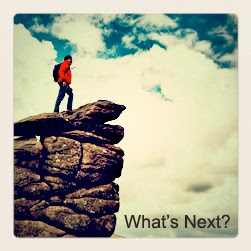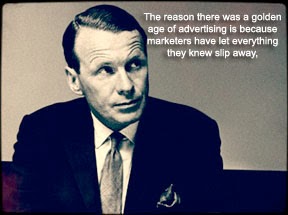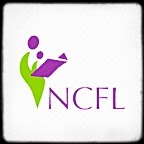It would have cost somewhere around $3 million for a retail outlet to buy 15 minutes of airtime around CBS's "60 Minutes" on the Sunday night before Cyber Monday. But Amazon CEO Jeff Bezos secured his spot for free. He appeared to talk about the future Amazon drone delivery program.
"I know this looks like science fiction — it's not," Bezos said, words that have been echoed a million times over. The maelstrom of media attention that has followed can't be quantified. Every major and mid-level media outlet has covered the "60 Minutes" segment, many finding their own angles.
A few story spins include validity vs. publicity, regulatory updates, retail delivery disruption, practical applications, test site applications, civilian safety concerns, law enforcement issues, consumer laziness, and countless others. It also makes the case for the power of brand equity. Other companies have announced drone delivery programs, but none of them had the brand equity of Amazon.
Bezos could have said Amazon was testing miniature sleighs powered by eight tiny reindeer and piloted by chubby guys in warm winter suits and it would have been new. But a majority of pitchmen would have laughed at or even blacklisted him. When mediocre pitches come from big companies, they can still move something from the future potential pile to the future possible pile. Bezos went further.
Why the Amazon Drone Delivery System story wins attention.
The reason the Amazon Drone Delivery System is such a success story is that it found the sweet spot between publicity and public relations. The reality is that Amazon, like many companies, is testing drone delivery programs that will one day be mainstream.
Never mind that the application will likely take longer than Bezos suggested, with some estimates putting drones off until 2020. Even then, such a program will likely be confined to rural or select suburban areas as opposed to high density urban centers. But then again, you never really know.
Technology can sometimes be fast tracked if people want it bad enough. And based on the chatter alone, people really want to see delivery drones and orders that arrive in less than 30 minutes. People want them, but not only for their ingrained predisposition for instant gratification.
Part of the Amazon drone delivery system allure is about the increasing need for Americans to regain their footing on the future. After the constant bombardment of stories best summed up as "failing empire syndrome," consumers are ready for drone deliveries because it represents an ideal.
Launching a drone delivery program would prove American business, technology and affluence are still part of the equation. It's just far out enough to feel like science fiction but just close enough to feel like science fact. And along with that, it touches our psyche to say anything is still possible.
What the Amazon Drone Delivery Program accomplished.
In the weeks ahead, some public relations professionals and entrepreneurs will likely dismiss the story as a publicity stunt. But the Amazon drone delivery program isn't just a publicity stunt. The company is working toward shorter delivery times; which ones get off the ground or not won't matter.
The notion that Amazon succeeded in usurping attention from any other major retailer on Cyber Monday is icing on the cake. The real accomplishment is that Amazon has once again affirmed itself at the forefront of technology — playing at the same scale as Apple, Google, Nike, etc. — while nurturing publics that want Amazon and Bezos to succeed in innovating a better world.
They want companies with a penchant for big ideas. They want more people like Steve Jobs. They don't even care if companies succeed or fail on big ideas like PrimeAir (which is what the drone program is called). They want what Seth Godin might call a Purple Cow or Malcom Gladwell might call another David. They want these things because we've seen too much dismantling in a decade.
Bezos is a smart CEO because he tapped into this need and fulfilled it, even if it might be premature or a little bit fanciful. That isn't a trite publicity stunt like sitting naked on a wrecking ball. It's a strategic move to build brand equity as an innovative retailer, one that people will support.
Think about that before your company pitches a teleportation segment. PrimeAir isn't a publicity stunt, even if the story generated (and is still generating) an epic amount of publicity. PrimeAir is a well-timed real story that reinforces the strategic position of a brand that people genuinely like and how it is really doing something that could change our perception of what's possible.
When was the last time your company did that? If it has been a long time, then perhaps it would be worthwhile to explore the possibilities. Instead of worrying about the packaging of a company (like marketing and public relations tend to do), maybe it's time to think about what's inside the box.
"I know this looks like science fiction — it's not," Bezos said, words that have been echoed a million times over. The maelstrom of media attention that has followed can't be quantified. Every major and mid-level media outlet has covered the "60 Minutes" segment, many finding their own angles.
A few story spins include validity vs. publicity, regulatory updates, retail delivery disruption, practical applications, test site applications, civilian safety concerns, law enforcement issues, consumer laziness, and countless others. It also makes the case for the power of brand equity. Other companies have announced drone delivery programs, but none of them had the brand equity of Amazon.
Bezos could have said Amazon was testing miniature sleighs powered by eight tiny reindeer and piloted by chubby guys in warm winter suits and it would have been new. But a majority of pitchmen would have laughed at or even blacklisted him. When mediocre pitches come from big companies, they can still move something from the future potential pile to the future possible pile. Bezos went further.
Why the Amazon Drone Delivery System story wins attention.
The reason the Amazon Drone Delivery System is such a success story is that it found the sweet spot between publicity and public relations. The reality is that Amazon, like many companies, is testing drone delivery programs that will one day be mainstream.
Never mind that the application will likely take longer than Bezos suggested, with some estimates putting drones off until 2020. Even then, such a program will likely be confined to rural or select suburban areas as opposed to high density urban centers. But then again, you never really know.
Technology can sometimes be fast tracked if people want it bad enough. And based on the chatter alone, people really want to see delivery drones and orders that arrive in less than 30 minutes. People want them, but not only for their ingrained predisposition for instant gratification.
Part of the Amazon drone delivery system allure is about the increasing need for Americans to regain their footing on the future. After the constant bombardment of stories best summed up as "failing empire syndrome," consumers are ready for drone deliveries because it represents an ideal.
Launching a drone delivery program would prove American business, technology and affluence are still part of the equation. It's just far out enough to feel like science fiction but just close enough to feel like science fact. And along with that, it touches our psyche to say anything is still possible.
What the Amazon Drone Delivery Program accomplished.
In the weeks ahead, some public relations professionals and entrepreneurs will likely dismiss the story as a publicity stunt. But the Amazon drone delivery program isn't just a publicity stunt. The company is working toward shorter delivery times; which ones get off the ground or not won't matter.
The notion that Amazon succeeded in usurping attention from any other major retailer on Cyber Monday is icing on the cake. The real accomplishment is that Amazon has once again affirmed itself at the forefront of technology — playing at the same scale as Apple, Google, Nike, etc. — while nurturing publics that want Amazon and Bezos to succeed in innovating a better world.
They want companies with a penchant for big ideas. They want more people like Steve Jobs. They don't even care if companies succeed or fail on big ideas like PrimeAir (which is what the drone program is called). They want what Seth Godin might call a Purple Cow or Malcom Gladwell might call another David. They want these things because we've seen too much dismantling in a decade.
Bezos is a smart CEO because he tapped into this need and fulfilled it, even if it might be premature or a little bit fanciful. That isn't a trite publicity stunt like sitting naked on a wrecking ball. It's a strategic move to build brand equity as an innovative retailer, one that people will support.
Think about that before your company pitches a teleportation segment. PrimeAir isn't a publicity stunt, even if the story generated (and is still generating) an epic amount of publicity. PrimeAir is a well-timed real story that reinforces the strategic position of a brand that people genuinely like and how it is really doing something that could change our perception of what's possible.
When was the last time your company did that? If it has been a long time, then perhaps it would be worthwhile to explore the possibilities. Instead of worrying about the packaging of a company (like marketing and public relations tend to do), maybe it's time to think about what's inside the box.




































